Mobile applications are increasing at a rapid rate. A report published on Statista shows that 255 Billion mobile apps were downloaded in 2022. With increased demand for mobile apps, the demand for mobile app developers is also growing.
Since Android is one of the market leaders in the operating system space for mobile, this blog aims to discuss “Layouts in Android”. By the end of this blog, you can build simple and complex Android screens by yourself. We will cover various Views and ViewGroups along with appropriate examples to help you understand Layouts in Android.
**WebDriver is a remote programming interface that can be used to control, or drive, a browser either locally or on a remote machine. Learn more in this complete Selenium WebDriver Tutorial **
What are Layouts in Android?
Layout refers to the arrangement of user interface (UI) elements on the Android app’s screen, like buttons, texts, images, etc.
Layouts in Android are primarily used to define the UI and widgets that appear on the screen of an Android app. These layouts are very crucial in Android apps as they act as the bridge between the user’s actions and the app’s logic. As soon as the user interacts with any layouts in Android (e.g., Buttons, ImageViews, EditTexts, etc. ), the Java/Kotlin program detects these interactions using pre-defined methods like OnClick, OnDoubleClick, etc.
Layouts in Android are usually defined in two primary ways:
Define UI elements in the respective layout XML file.
Create elements directly in the Java/Kotlin file dynamically.
Generally, defining layouts in the respective XML file is a good practice. It is an officially recommended method as it helps us keep the UI and app’s logic separate and hence enhances the app’s Scalability. Android Studio offers a design editor for XML files where we can preview our design and edit them by drag and drop option. When we open any XML layout file, the design editor opens by default. Hence in this article, we will primarily use XML files for Layouts in Android.
All elements in the layout are created using a hierarchy of View and ViewGroup objects. A View is used to create something the user can see and interact with. While a ViewGroup is an invisible container that contains and defines the layout structure for other View and ViewGroup objects. An example of such a hierarchy can be seen in the Image below.
*A complete tutorial on retesting that sheds light on its features, importance, pros and cons, and how to perform it. *
View Layouts in Android
The View is a base class for all the UI elements in Android apps, and it is used to build interactive UI components such as TextView, EditText, Button, Checkbox, RadioButton, ImageButton, ProgressBar, and ImageView. It is also responsible for creating dynamic or static elements on the screen and event handling for interaction with the user.
There are many View Layouts in Android, but listed below are some commonly used View layouts to build UI elements.
TextView Layout in Android
In Android, TextView is a user interface element used to display and set the static and dynamic text on the user screen based on our requirements. The TextView element acts like label control, and it doesn’t allow users to edit the text.
Create *TextView *in an XML layout file
<?xml version="1.0" encoding="utf-8"?>
<LinearLayout xmlns:android="http://schemas.android.com/apk/res/android"
xmlns:app="http://schemas.android.com/apk/res-auto"
xmlns:tools="http://schemas.android.com/tools"
android:layout_width="match_parent"
android:layout_height="match_parent"
android:orientation="vertical"
android:padding="16dp"
tools:context=".ExampleActivity">
<TextView
android:id="@+id/textView_id"
android:layout_width="wrap_content"
android:layout_height="wrap_content"
android:layout_margin="10dp"
android:text="Welcome to LambdaTest"
android:textColor="#000000"
android:textSize="24sp"
android:textStyle="bold" />
</LinearLayout>
If you observe the above code carefully, you can see that we have used some attributes in this TextView element. These attributes are used to define the design and style of the layouts in Android and hence are important. Some of these attributes are common and can be applied in almost all the View elements in Android, while some are View specific.
Some common attributes that apply to all the layouts are *id *(Used to assign a unique ID to the view which can be used later to access them, here ), *layout_width *(used to define the width of the view, here wrap_content means that width will be minimum to cover the whole content inside it), *layout_height *(used to define the height of the view), and *layout_margin *(used to leave margin on the view).
Attributes specific to TextView are text (used to define the text that will be shown on the UI), textColor (used to set the text color), textSize **(defines the font size of the text to display), and **textStyle (used to define the text style like bold or italic).
Emulator Output:
*Online Selenium Grid to run your browser automation testing scripts on cloud infrastructure containing 3000+ desktop and mobile browser environments. Perform Selenium Testing on a cloud automation testing grid that scales along with your tests. *
EditText Layout in Android
EditText is a user interface element that allows the user to input and modify text/numbers through it. It is an extended version of the TextView element with few additional features and is used to let users enter input values.
Create *EditText *in an XML layout file
<?xml version="1.0" encoding="utf-8"?>
<LinearLayout xmlns:android="http://schemas.android.com/apk/res/android"
xmlns:app="http://schemas.android.com/apk/res-auto"
xmlns:tools="http://schemas.android.com/tools"
android:layout_width="match_parent"
android:layout_height="match_parent"
android:orientation="vertical"
android:padding="16dp"
tools:context=".ExampleActivity">
<EditText
android:id="@+id/edittext_id"
android:layout_height="wrap_content"
android:layout_width="match_parent"
android:hint="Input Hint"
android:inputType="text"/>
</LinearLayout>
Attributes used in the above code for EditText are as:
The hint attribute is used to set the hint text into the EditText field. This text will appear in the input box when it is empty.
*Discover 31 top test automation tools in 2023 for powerful and efficient testing solutions. *
While using EditText control in our Android app, we must define the data type the text field can accept using the inputType attribute. For example, if our EditText should accept plain text, then we need to set the inputType attribute as “text”. In case it is used for a password, then we need to set the inputType as “textPassword”.
Emulator Output:
Button Layout in Android
The Button is a very crucial user interface element. It is used to perform an action whenever the user clicks or taps on it. Generally, Buttons in Android can contain text, icons, or both, or images and perform an action when the user touches it. Whenever the user clicks on any Button, the Button will call an on-click event.
Create a *Button *in an XML layout file
<?xml version="1.0" encoding="utf-8"?>
<LinearLayout xmlns:android="http://schemas.android.com/apk/res/android"
xmlns:app="http://schemas.android.com/apk/res-auto"
xmlns:tools="http://schemas.android.com/tools"
android:layout_width="match_parent"
android:layout_height="match_parent"
android:orientation="vertical"
android:padding="16dp"
tools:context=".ExampleActivity">
<Button
android:id="@+id/btnId"
android:layout_width="match_parent"
android:layout_height="wrap_content"
android:text="I am Button"
android:onClick="btnOperation"/>
</LinearLayout>
*Test native, hybrid, and web apps on any mobile OS with our free Android emulator online. Sign up to optimize app performance. *
Attributes used in the above code for the Button are as:
The text attribute is used to set the text on the button. This text will appear on the button.
We can define the click event handler for the button by adding the onClick attribute to the < Button > object in our XML layout file.
Emulator Output:
*Try iphone simulator online by LambdaTest for free. It allows you to test your websites and webapps on latest to legacy devices, OS versions and browsers. *
CheckBox Layout in Android
A CheckBox is a two-state button that can be either unchecked (OFF) or checked (ON) and it permits users to toggle between the two states (OFF/ON) based on the requirements. Generally, we can use multiple CheckBox elements in an Android app to let users select multiple options from the set of values. By default, the Android CheckBox is always in the Unchecked (OFF) state.
Create a *CheckBox *in an XML layout file
<?xml version="1.0" encoding="utf-8"?>
<LinearLayout xmlns:android="http://schemas.android.com/apk/res/android"
xmlns:app="http://schemas.android.com/apk/res-auto"
xmlns:tools="http://schemas.android.com/tools"
android:layout_width="match_parent"
android:layout_height="match_parent"
android:orientation="vertical"
android:padding="16dp"
tools:context=".ExampleActivity">
<CheckBox
android:id="@+id/chkBtnId"
android:layout_width="wrap_content"
android:layout_height="wrap_content"
android:checked="true"
android:text="LambaTest is Best" />
</LinearLayout>
The checked attribute is used to change the state of CheckBox to ON / OFF, if we need to set android:checked = “true” then our CheckBox will be in an ON state, while android:checked = “false” will set our CheckBox to OFF state.
Emulator Output:
*Deep dive to learn about Software automation testing, its uasage, types and also gain insights on how to get started with automated testing. *
RadioButton Layout in Android
The RadioButton is also a two-state button that can have two states either unchecked or checked, just like the CheckBox element, except that it allows only one option to be selected from the group of options. In Android, the CheckBox element permits users to change the state of control to either unchecked or Checked, but the RadioButton can’t be unchecked once it is checked.
We can use RadioButtons inside a RadioGroup to combine various RadioButtons into one group, and it will make sure that users can select only one option from the group of multiple options.
Create *RadioButtons *inside RadioGroup in an XML layout file
<?xml version="1.0" encoding="utf-8"?>
<LinearLayout xmlns:android="http://schemas.android.com/apk/res/android"
xmlns:app="http://schemas.android.com/apk/res-auto"
xmlns:tools="http://schemas.android.com/tools"
android:layout_width="match_parent"
android:layout_height="match_parent"
android:orientation="vertical"
android:padding="16dp"
tools:context=".ExampleActivity">
<RadioGroup
android:id="@+id/radioGroup"
android:layout_width="match_parent"
android:layout_height="wrap_content"
android:orientation="vertical">
<!-- Radio Button 1 -->
<RadioButton
android:id="@+id/radioBtn1"
android:layout_width="wrap_content"
android:layout_height="wrap_content"
android:text="Option no 1"/>
<!-- Radio Button 2 -->
<RadioButton
android:id="@+id/radioBtn2"
android:layout_width="wrap_content"
android:layout_height="wrap_content"
android:text="Option no 2"/>
</RadioGroup>
</LinearLayout>
In the above code for RadioGroup layouts in Android, the orientation attribute is used to specify the direction in which RadioButtons inside it will align. It can have two values horizontal or vertical.
Emulator Output:
*Learn why automation testing using python is a top choice. This comprehensive tutorial provides a step-by-step guide to Python automation testing to help you streamline your testing process. *
ImageButton Layout in Android
The ImageButton is a user interface control element that is used to create buttons with an image and to trigger pre-specified action when a user taps or clicks on it. By default, an ImageButton looks the same as a normal Button, but the only difference between them is that we can add any custom image or icon to the button instead of plain text.
Create *ImageButton *in an XML layout file
<?xml version="1.0" encoding="utf-8"?>
<LinearLayout xmlns:android="http://schemas.android.com/apk/res/android"
xmlns:app="http://schemas.android.com/apk/res-auto"
xmlns:tools="http://schemas.android.com/tools"
android:layout_width="match_parent"
android:layout_height="match_parent"
android:orientation="vertical"
android:padding="16dp"
tools:context=".ExampleActivity">
<ImageButton
android:id="@+id/imgBtnId"
android:layout_width="match_parent"
android:layout_height="wrap_content"
android:src="@drawable/custom_image"
android:onClick="buttonClickOperation"/>
</LinearLayout>
Here while specifying ImageButton layouts in Android, we must define the src attribute which is used to specify or indicate the source file of the Image to be displayed on the ImageButton. We pass the actual image file to the src attribute, generally stored in the drawable or asset directory of the Android project.
Emulator Output:
ProgressBar Layout in Android
The ProgressBar is the user interface element used to indicate users for any ongoing progress of an operation like fetching data, uploading, downloading a file, etc. Any app that runs any time-consuming progress must use ProgressBar to keep the users notified about the progress otherwise, users may think that the app is lagging and hence could quit the app.
Create *ProgressBar *in an XML layout file
<?xml version="1.0" encoding="utf-8"?>
<LinearLayout xmlns:android="http://schemas.android.com/apk/res/android"
xmlns:app="http://schemas.android.com/apk/res-auto"
xmlns:tools="http://schemas.android.com/tools"
android:layout_width="match_parent"
android:layout_height="match_parent"
android:orientation="vertical"
android:padding="16dp"
tools:context=".ExampleActivity">
<ProgressBar
android:id="@+id/progressBarId"
style="?android:attr/progressBarStyleHorizontal"
android:layout_width="match_parent"
android:layout_height="wrap_content"
android:max="100"
android:indeterminate="true"
android:progress="50" />
</LinearLayout>
In the above code for creating ProgressBar, we used a few attributes that need to be understood to understand its behavior on UI.
The style attribute is mainly used to specify the layout design to be applied to the object. The value for this style attribute can be custom or system defined. Here we used ?*android:attr/progressBarStyleHorizontal* style which is specific to ProgressBar and it makes the ProgressBar horizontal, instead of the default style (circular).
The max attribute is used to define the maximum value for the ProgressBar. It must be an unsigned integer greater than equals to 1.
The progress attribute is used to set the progress completed at the instant. It can range from 0 to max.
The indeterminate attribute is used to enable/disable the indeterminate progress mode. By, default it has true value and is hence enabled. The Indeterminate progress mode in the ProgressBar is when we don’t know or specify how long a task will take or how much work has been done.
Emulator Output
*In this Selenium JavaScript tutorial, as we deep dive into the basic concepts, explained the best practices and executed scripts with JavaScript for automation testing on cloud-based Selenium Grid. *
ImageView Layout in Android
The ImageView is a user interface control element that is used to display an image on the screen. While specifying ImageView layouts in Android, we must define the src attribute which is used to specify or indicate the source file of the Image to be displayed on the ImageButton.
Create *ImageView *in an XML layout file
<?xml version="1.0" encoding="utf-8"?>
<LinearLayout xmlns:android="http://schemas.android.com/apk/res/android"
xmlns:app="http://schemas.android.com/apk/res-auto"
xmlns:tools="http://schemas.android.com/tools"
android:layout_width="match_parent"
android:layout_height="match_parent"
android:orientation="vertical"
android:padding="16dp"
tools:context=".ExampleActivity">
<ImageView
android:id="@+id/imgViewId"
android:layout_width="match_parent"
android:layout_height="match_parent"
android:src="@drawable/custom_image"/>
</LinearLayout>
Emulator Output:
ViewGroup Layouts in Android
The ViewGroup is a subclass of the View class and it acts as a base class for layouts and UI structure parameters. The ViewGroup provides us with an invisible container that can hold and arrange other Views and ViewGroups and define the main layout properties. For example, RelativeLayout is the ViewGroup that can contain other Views like Button, TextView, Images, other RelativeLayout, LinearLayout, etc.
Some common ViewGroup layouts in Android used to define the structure of screen UI are as follows:
*Learn why Python is the top choice for automation testing. This comprehensive tutorial provides a step-by-step guide to Python for automation testing to help you streamline your testing process. *
LinearLayout in Android
The LinearLayout is a ViewGroup subclass that is used to arrange all child View elements one by one in the form of a queue either in a Vertical or Horizontal direction based on the orientation attribute. A pictorial representation of LinearLayout in Android apps is shown in the image below.
The above image clearly represents that in LinearLayout, if the orientation specified is horizontal, then the LinearLayout will have only one row of multiple columns otherwise, if the orientation is vertical, then it will have one column of multiple rows.
Create LinearLayout in an XML layout file
<?xml version="1.0" encoding="utf-8"?>
<LinearLayout xmlns:android="http://schemas.android.com/apk/res/android"
xmlns:app="http://schemas.android.com/apk/res-auto"
xmlns:tools="http://schemas.android.com/tools"
android:layout_width="match_parent"
android:layout_height="match_parent"
android:orientation="vertical"
android:padding="16dp"
tools:context=".ExampleActivity">
<TextView
android:id="@+id/textView1"
android:layout_width="wrap_content"
android:layout_height="wrap_content"
android:textColor="@color/black"
android:textSize="40dp"
android:text="First TextView" />
<TextView
android:id="@+id/textView2"
android:layout_width="wrap_content"
android:layout_height="wrap_content"
android:textColor="@color/black"
android:textSize="40dp"
android:text="Second TextView" />
</LinearLayout>
The above code will arrange the two TextViews in the vertical direction hence textview1 will come first in the list and below it will be textview2.
Emulator Output:
RelativeLayout in Android
As the name suggests, RelativeLayout ViewGroup is used to arrange the position of child Views relative to each other or relative to the parent. For example, here, we can arrange child View A to the left of child View B, and we may arrange View B to align the bottom of the parent.
RelativeLayouts in Android is mainly used to design complex layouts where the position of child View elements depends on other View’s position. A simple pictorial representation of Views inside a RelativeLayout is shown in the image below.
To achieve these multiple types of alignment in RelativeLayout we specify attributes to the child elements that define their position. These attributes are listed in the table below. We can use these attributes to form complex UI layouts in Android. Let’s consider an example of creating RelativeLayout.
Create *RelativeLayout *in an XML layout file
<?xml version="1.0" encoding="utf-8"?>
<RelativeLayout xmlns:android="http://schemas.android.com/apk/res/android"
xmlns:app="http://schemas.android.com/apk/res-auto"
xmlns:tools="http://schemas.android.com/tools"
android:layout_width="match_parent"
android:layout_height="match_parent"
android:orientation="vertical"
android:padding="16dp"
tools:context=".ExampleActivity">
<!-- It will appear on the top left of the parent -->
<TextView
android:id="@+id/textView1"
android:layout_width="wrap_content"
android:layout_height="wrap_content"
android:textColor="@color/black"
android:textSize="40dp"
android:text="Hello,"
android:layout_alignParentTop="true"
android:layout_alignParentStart="true"/>
<!-- It will appear on the bottom left of the parent -->
<TextView
android:id="@+id/textView2"
android:layout_width="wrap_content"
android:layout_height="wrap_content"
android:textColor="@color/black"
android:textSize="40dp"
android:text="Relative Layout!"
android:layout_below="@id/textView1"
android:layout_alignParentStart="true"/>
<!-- It will appear below textview2 but horizontally centered -->
<Button
android:id="@+id/button"
android:layout_width="wrap_content"
android:layout_height="wrap_content"
android:text="Click Me"
android:layout_below="@id/textView2"
android:layout_centerHorizontal="true"
android:layout_marginTop="16dp"/>
<!-- It will appear at the end of the parent layout -->
<ImageView
android:id="@+id/imageView"
android:layout_width="wrap_content"
android:layout_height="wrap_content"
android:src="@drawable/logo"
android:layout_below="@id/button"
android:layout_alignParentEnd="true"
android:layout_marginTop="16dp"
android:layout_marginEnd="16dp"/>
</RelativeLayout>
Emulator Output:
*Perform native app testing on real mobile devices online. Test on Android and iOS devices with LambdaTest. Run automated or manual native app tests. Start Online Device testing for free today! *
TableLayout in Android
TableLayout is a ViewGroup element that is used to arrange its child ViewElements in the form of a table with rows and columns. It will position its child View elements into columns and rows and not create any border lines for columns, rows, or cells.
Create TableLayout in an XML layout file
<?xml version="1.0" encoding="utf-8"?>
<TableLayout xmlns:android="http://schemas.android.com/apk/res/android"
xmlns:app="http://schemas.android.com/apk/res-auto"
xmlns:tools="http://schemas.android.com/tools"
android:layout_width="match_parent"
android:layout_height="match_parent"
android:orientation="vertical"
android:padding="16dp"
tools:context=".ExampleActivity">
<!-- Table Row 1 -->
<TableRow>
<!-- Table Cell 1 -->
<TextView
android:layout_width="wrap_content"
android:layout_height="wrap_content"
android:text="Name:"
android:paddingEnd="8dp" />
<!-- Table Cell 2 -->
<EditText
android:id="@+id/editTextName"
android:layout_width="0dp"
android:layout_height="wrap_content"
android:layout_weight="1"
android:hint="Enter your name" />
</TableRow>
<!-- Table Row 2 -->
<TableRow>
<!-- Table Cell 1 -->
<TextView
android:layout_width="wrap_content"
android:layout_height="wrap_content"
android:text="Email:"
android:paddingEnd="8dp" />
<!-- Table Cell 2 -->
<EditText
android:id="@+id/editTextEmail"
android:layout_width="0dp"
android:layout_height="wrap_content"
android:layout_weight="1"
android:hint="Enter your email" />
</TableRow>
<!-- Table Row 3 -->
<TableRow>
<!-- Table Cell 1 -->
<Button
android:layout_width="match_parent"
android:layout_height="wrap_content"
android:layout_span="2"
android:text="Submit" />
</TableRow>
</TableLayout>
Code Breakdown:
The TableLayout is the parent layout that will form the table inside it.
The TableRow View layouts in Android are used to define one row of the table. It contains table cells inside it.
In all the table cell elements, we used the layout_weight property, which specifies how much space is allocated to that View in the parent layout. This space is calculated based on the below formulae.
Space assigned to child = (child’s individual weight) / (sum of the weight of every child in parent layout)
In the Button of the last TableRow, we used the layout_span attribute which simply means that a number of the specified cells will be merged and hence the view will take the width of the complete merged cell. Here we assigned layout_span = “2”, which means that two cells will be merged in the row.
Emulator Output:
ListView in Android
ListView in Android is a ViewGroup element that is used to display a scrollable list of other View or ViewGroups in multiple rows. The list items are automatically inserted into the ListView using an adapter Class.
Generally, this adapter class pulls data from the database or API in the form of an array or list and converts each item into a result view that’s placed into the ListView. This is very useful in making Android apps that are dynamic and progressive.
Android Adapter
The adapter in Android acts as a bridge between the data sources (database or API) and adapter Views like ListView, and Gridview to fill the data into View elements. This adapter holds the data in the form of an array or list, iterates through items in the data set, and generates the View for each item in the list.
Create ListView in an XML layout file
<ListView
android:id="@+id/listView"
android:layout_width="match_parent"
android:layout_height="match_parent" />
Assign Adapter and Data to the *ListView*
// Create Data array
String[] users = { "JON DEO", "AHANA DEO", "Alavala Dasari",
"Pravala Seh", "Mady Sail", "Hamsi Yemieni"};
// Declare a reference to the ListView in layout file
ListView mListView = (ListView) findViewById(R.id.listView);
// Define an ArrayAdapter to hold and display the data in the list view
ArrayAdapter aAdapter = new ArrayAdapter(this, android.R.layout.simple_list_item_1, users);
// Set the defined ArrayAdapter to the ListView
mListView.setAdapter(aAdapter);
Code Breakdown:
The findViewById() method is used to link the UI element in the XML file with the Java/Kotlin Class or Activity.
The ArrayAdapter() constructor is used to create an adapter that will assign the value of the users list to the ListView.
The setAdapter() method is used to assign an adapter to the ListView.
*Experience efficient Android device test with LambdaTest. Test your apps interactively on a variety of Android devices for optimal performance and user experience. *
How to Design Complex Layouts in Android?
Now that we have learned about some commonly used View and ViewGrop layouts in Android, it’s time to design some complex UI in Android. This example will give us an actual understanding of how to use these layouts in combination and how to listen to user events on these UI elements.
In this article, we will try to clone the homepage of the LambdaTest website using various View and ViewGroup elements.
To proceed, let’s create an Android Project with no activity.
Next, we need to create an Empty View Activity with a layout file as shown in the image below. We will write our example in the layout file generated.
Before moving ahead please make sure you import all the necessary assets like logo images and icons into the Drawable resource director. Now let’s modify the activity layout file to write the code and achieve the desired design.
<?xml version="1.0" encoding="utf-8"?>
<LinearLayout xmlns:android="http://schemas.android.com/apk/res/android"
xmlns:app="http://schemas.android.com/apk/res-auto"
xmlns:tools="http://schemas.android.com/tools"
android:layout_width="match_parent"
android:layout_height="match_parent"
android:orientation="vertical"
android:padding="16dp"
tools:context=".ExampleActivity">
<!--RelativeLayot for header bar-->
<RelativeLayout
android:layout_width="match_parent"
android:layout_height="wrap_content"
android:padding="10dp">
<!-- Logo Image View-->
<ImageView
android:id="@+id/iv_logo"
android:layout_width="wrap_content"
android:layout_height="wrap_content"
android:src="@drawable/logo"/>
<!-- Hamburgur menu button as Image Button-->
<ImageButton
android:id="@+id/ib_primary_menu"
android:layout_width="wrap_content"
android:layout_height="wrap_content"
android:src="@drawable/baseline_menu_24"
android:background="null"
android:layout_alignParentEnd="true"
android:layout_centerVertical="true" />
</RelativeLayout>
<!--Primary heading as TextView -->
<TextView
android:layout_width="match_parent"
android:layout_height="wrap_content"
android:textAlignment="center"
android:layout_marginTop="80dp"
android:text="Next-Generation Mobile Apps and Cross Browser"
android:textColor="@color/black"
android:textFontWeight="500"
style="@style/TextAppearance.MaterialComponents.Headline4" />
<TextView
android:layout_width="match_parent"
android:layout_height="wrap_content"
android:textAlignment="center"
android:text="Testing Cloud"
android:textColor="@color/purple_700"
android:textFontWeight="500"
style="@style/TextAppearance.MaterialComponents.Headline4" />
<!--Description Text -->
<TextView
android:layout_width="match_parent"
android:layout_height="wrap_content"
android:textAlignment="center"
android:layout_marginTop="20dp"
android:text="Deliver unparalleled digital experience with our next-gen
AI-powered testing cloud platform. Ensure exceptional user
experience across all devices and browsers."
android:textColor="@android:color/darker_gray"
android:textFontWeight="400"
style="@style/TextAppearance.MaterialComponents.Body1" />
<!-- Google Login Button design-->
<Button
android:id="@+id/googleLogin"
android:layout_width="match_parent"
android:layout_height="wrap_content"
android:layout_marginTop="40dp"
android:text="Start free with Google"
android:textAllCaps="false"
android:textColor="@color/white"
android:backgroundTint="@color/black"
android:drawableStart="@drawable/ic_android_black_24dp" />
<!-- Email Login Button design-->
<Button
android:id="@+id/emailLogin"
android:layout_width="match_parent"
android:layout_height="wrap_content"
android:text="Start free with Email"
android:textAllCaps="false"
android:textColor="@color/black"
android:backgroundTint="@color/white" />
<!--Trust Label Description Text -->
<TextView
android:layout_width="match_parent"
android:layout_height="wrap_content"
android:textAlignment="center"
android:layout_marginTop="20dp"
android:text="Trusted by 2M+ users globally"
android:textColor="@android:color/darker_gray"
android:textFontWeight="400"
style="@style/TextAppearance.MaterialComponents.Body2" />
<!--Company logo Grid Row 1-->
<LinearLayout
android:layout_width="match_parent"
android:layout_height="wrap_content"
android:gravity="center">
<ImageView
android:layout_width="wrap_content"
android:layout_height="wrap_content"
android:src="@drawable/microsoft" />
<ImageView
android:layout_width="wrap_content"
android:layout_height="wrap_content"
android:src="@drawable/nvidia" />
<ImageView
android:layout_width="wrap_content"
android:layout_height="wrap_content"
android:src="@drawable/vimeo" />
</LinearLayout>
<!--Company logo Grid Row 2-->
<LinearLayout
android:layout_width="match_parent"
android:layout_height="wrap_content"
android:gravity="center">
<ImageView
android:layout_width="wrap_content"
android:layout_height="wrap_content"
android:src="@drawable/telstra" />
<ImageView
android:layout_width="wrap_content"
android:layout_height="wrap_content"
android:src="@drawable/rubrik" />
</LinearLayout>
</LinearLayout>
This code will produce a design that is very close to our desired design as shown in the image below.
*Test your native app and website on real iOS and Android devices hosted on the cloud. LambdaTest is a convenient, cost-effective and centralised solution for running realtime ,Automated and live device testing on real device cloud. *
Conclusion
Layouts in Android are an essential component for UI interface design in Android apps. It provides ways for end users to interact with the application. This article covered the basics of View and ViewGroup elements in detail, along with their relative attributes. In the end, we successfully designed a complex layout in Android.
However, it is always important to test all these layouts in Android must be properly tested using testing tools like LambdaTest. It allows mobile UI testing on a variety of genuine devices, including different brands and several versions of Android OS on emulators.


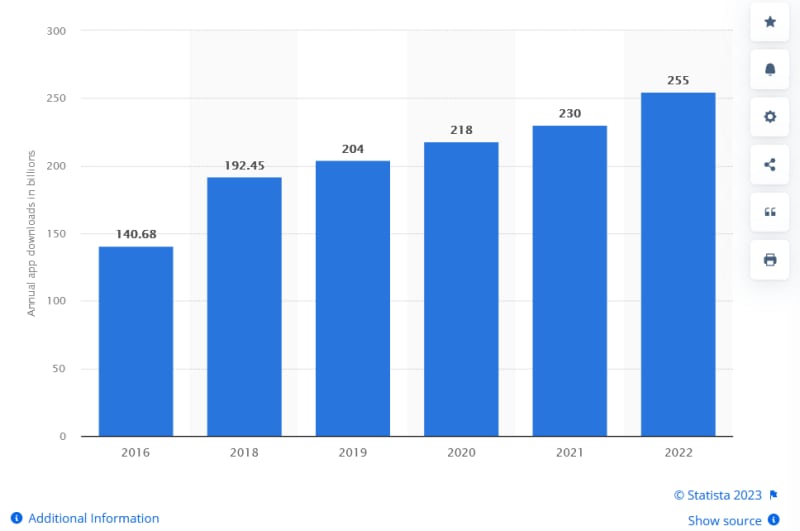










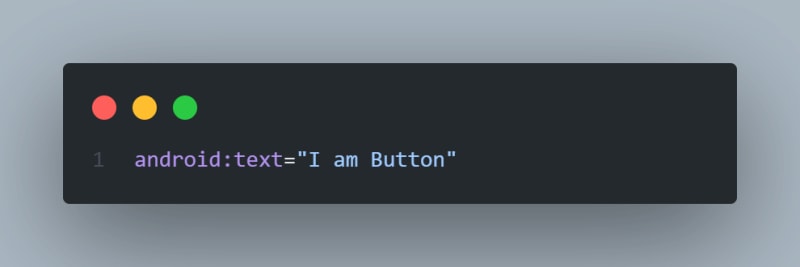






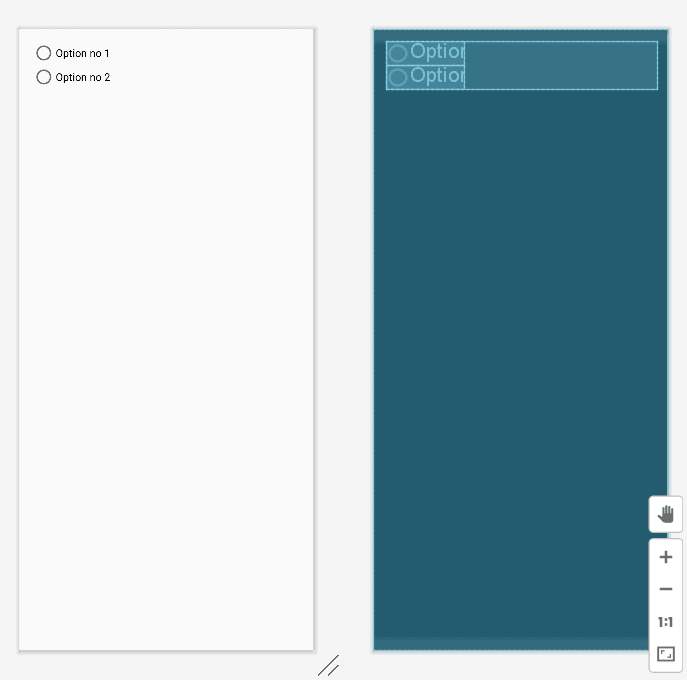

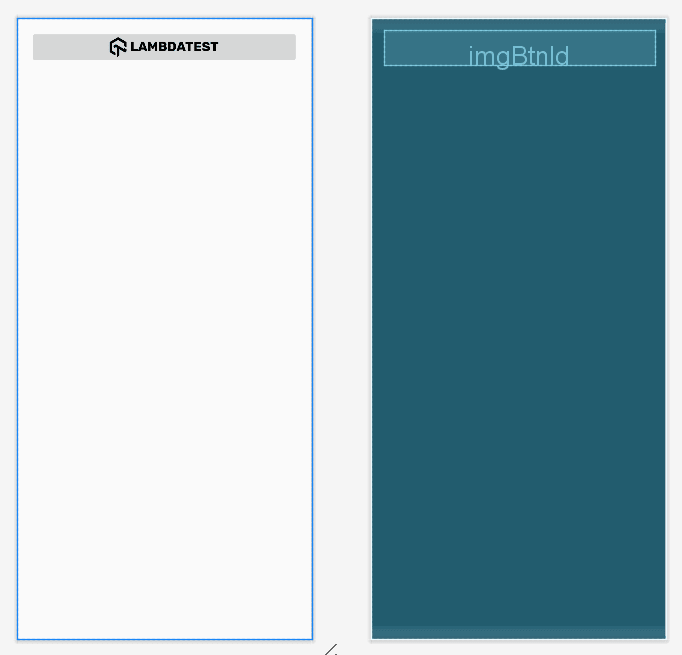










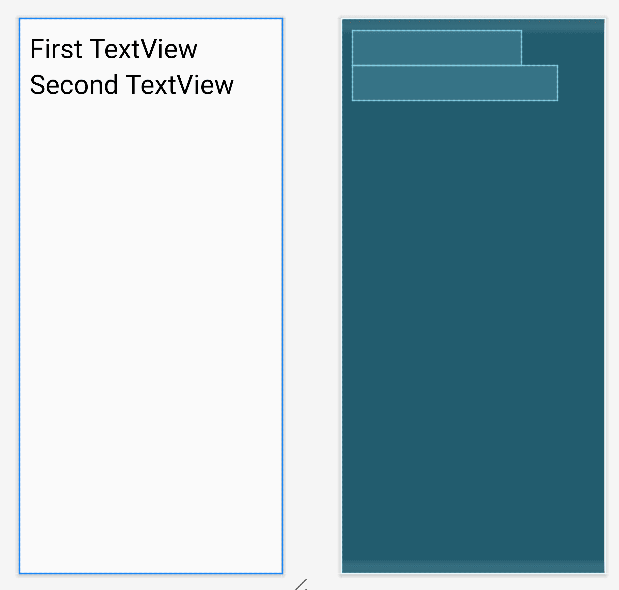


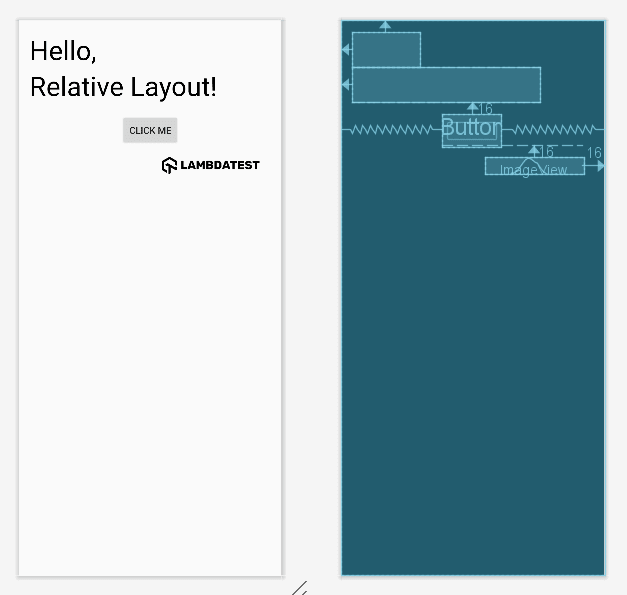






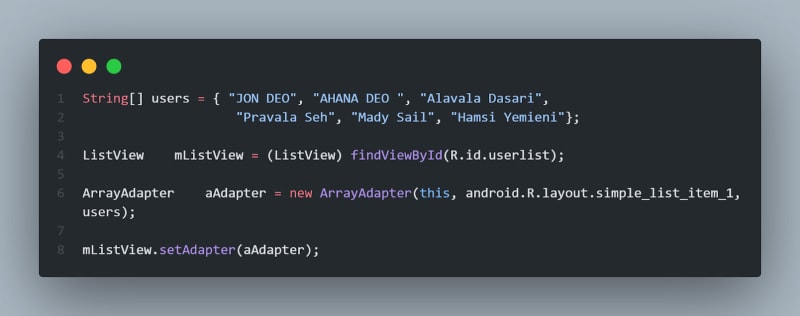




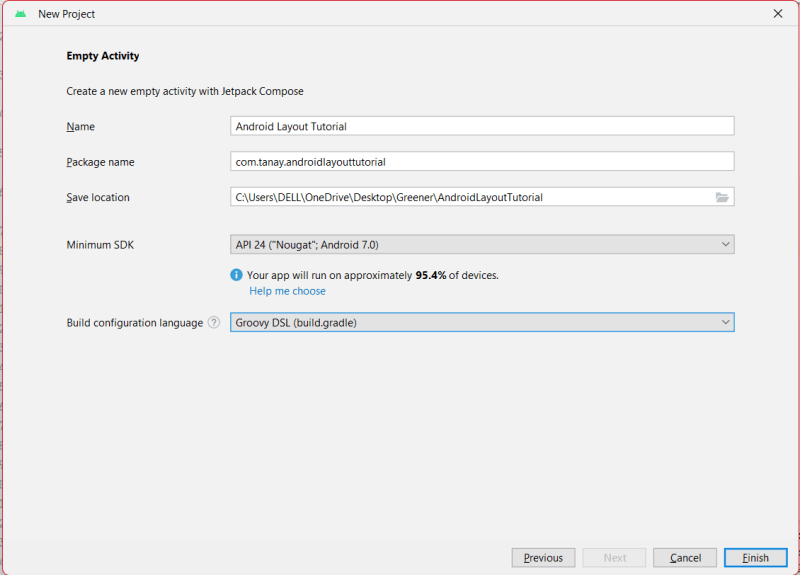







Top comments (0)